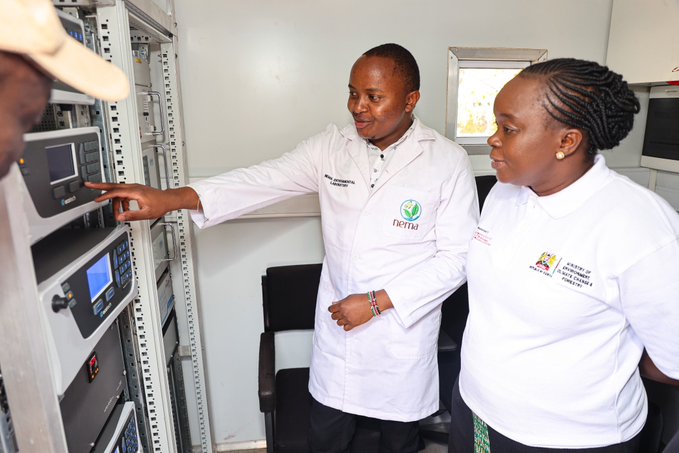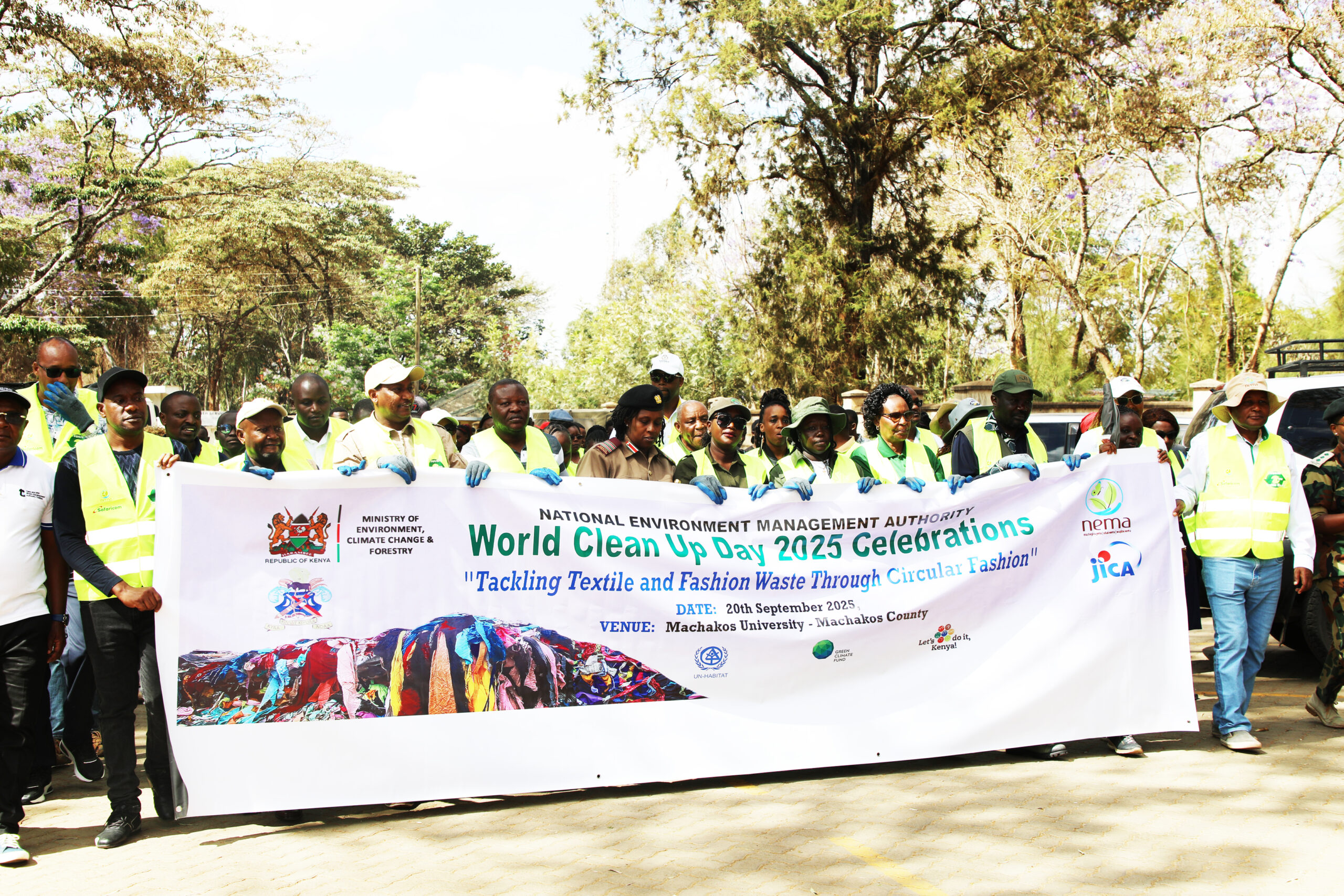Kenya stands at a critical moment in its development trajectory, characterized by rapid urbanization, a burgeoning population, and intensifying environmental pressures. As the country transitions to middle-income status through increased industrialization, as articulated in its long-term development blueprint, Vision 2030, the need for sustainable economic models has become increasingly urgent. Kenya faces multifaceted sustainability challenges, which, if strategically addressed, can serve as a catalyst for embracing the Circular Economy (CE)—a transformative approach that promotes inclusive economic growth, job creation, and environmental preservation.
Vision 2030, which charts Kenya’s path toward national transformation, is anchored on three key pillars: economic, social, and political. Sustainability and environmental stewardship are integral across these pillars. Within this context, the Circular Economy presents a powerful mechanism for achieving the goals of Vision 2030 by advancing resource efficiency, green innovation, environmental conservation, and inclusive development.
Understanding the Circular Economy
A Circular Economy is an alternative economic model designed to eliminate waste and promote the continual use of resources. In contrast to the traditional linear economy, commonly described as “Take-Make-Use-Dispose”, the circular model emphasizes minimizing waste through reuse, repair, refurbishment, remanufacturing, and recycling. Its primary objective is to retain the value of products, materials, and resources in the economy for as long as possible, thereby reducing environmental impacts and enhancing sustainability. This closed-loop system conserves natural resources, mitigates pollution, and bolsters economic resilience.
Relevance of the Circular Economy to Kenya
Kenya’s economy largely operates on a linear model, which poses several significant environmental and social challenges:
Resource Depletion: Increasing demand for natural resources such as biomass, minerals, and timber has led to unsustainable extraction rates. This overexploitation depletes resources faster than they can regenerate, making them increasingly unaffordable for low-income populations.
Habitat Destruction and Deforestation: Land clearing for agriculture, mining, and infrastructure development continues to degrade ecosystems, leading to biodiversity loss, soil erosion, and contributing to climate change.
Pollution: Environmental pollution occurs throughout the product lifecycle—from raw material extraction to manufacturing, distribution, and disposal. These activities release pollutants into the air, water, and soil, compromising ecosystem and public health.
Waste Generation: Significant amounts of waste, including hazardous materials and scrap, are generated during production and after product use. Much of this ends up in landfills or dumpsites, further exacerbating environmental degradation.
Social Inequality: The linear model often amplifies social disparities, where marginalized communities—frequently located near waste sites—bear the brunt of environmental harm. In contrast, a circular economy seeks to reduce inequality by promoting equitable access to resources, green jobs, and sustainable livelihoods.
By focusing on keeping resources in circulation and minimizing waste, the Circular Economy offers a holistic development approach that aligns economic growth with social inclusion and environmental responsibility.
Key Principles of the Circular Economy
- Designing out waste
Reduce: Minimizing the consumption of finite resources and the production of waste through improved efficiency and design.
- Designing for durability-manufacturers to design products that can last long not single use. Products that facilitate reuse :-
Reuse: Extending the lifecycle of products and materials by reusing them in their current form wherever possible.
Repair: Prioritizing maintenance and repair over replacement, fostering a culture of sustainability and resilience.
Remanufacture: Restoring used components to like-new condition, unlocking economic value from discarded products.
- Regenerating Natural capital through:-
Upcycle: Transforming waste materials into new products of higher value or quality, maximizing resource utility.
Recycle: Reprocessing waste materials into new products, reducing dependency on virgin materials and landfill use.
Benefits of the Circular Economy in Kenya
Environmental Gains: Reduction in greenhouse gas emissions, decreased pollution, and conservation of natural ecosystems through optimized resource use and waste minimization.
Improved Resource Efficiency: Reduced reliance on virgin raw materials by prioritizing recycling and reuse.
Economic Opportunities: Emergence of new business models, innovation, and employment in areas such as recycling, green manufacturing, and circular supply chains.
Social Inclusion: Creation of employment for marginalized groups, enhanced public health outcomes, and reduced environmental injustices.
Progress of Circular Economy in Kenya
Kenya has initiated its transition towards a circular economy, with notable activities emerging in sectors such as agriculture and waste management. Many initiatives involve transforming organic and packaging waste into valuable products—demonstrating the viability of circular business models.
To assess the impact of circular economy interventions, Kenya employed the Cambridge Econometrics FRAMES Model, focusing on six priority sectors: agri-food, plastics, construction, electrical and electronic equipment (EEE) and e-waste, and general waste. Key findings by 2030 include:
- Economic Impact:
- GDP growth of 0.5% (equivalent to €619 million) compared to the business-as-usual scenario.
- A €284 million reduction in imports and a €34 million increase in exports.
- Significant economic gains through reduced food loss across agricultural value chains.
- Social Impact:
- An estimated 46,000 additional jobs—an increase of 0.15%.
- Potential empowerment of informal waste workers through capacity building and formalization.
- Largest employment growth expected in agriculture and construction, with minor losses in fossil-fuel-based industries.
Earlier modeling through the Threshold-21 (T21) system dynamics model, focused on green economy pathways in sectors like agriculture, transport, energy, and manufacturing, demonstrated:
- A 12% increase in real GDP.
- A 15% rise in agricultural production and improved average crop yields.
- 9% reduction in energy use and CO₂ emissions in agriculture.
T21’s comprehensive modeling capability allows for better long-term forecasting by integrating economic, environmental, and social systems.
Examples of Circular Economy Initiatives in Kenya
Taka Taka Solutions: Diverts 95% of collected waste from landfills by sorting, recycling, and producing compost from organic waste for agricultural use.
Rainforest Alliance & Kenya Tea Development Agency (KTDA): Produces carbonized briquettes from agricultural waste and has supported over 13,000 households in adopting clean energy solutions. The project has also established tree nurseries at 12 tea factories, aiming to plant over 1 million trees.
Safi Organics: Converts rice husks into organic fertilizers using local open-source technology, enhancing soil health, improving yields, and addressing waste disposal challenges. Over 400 farmers have been trained in organic farming practices.
Mr. Green Africa: A tech-enabled plastics recycling company that formalizes the role of waste pickers, purchases plastic waste directly through trading hubs, and supplies processed recyclables to major FMCG manufacturers like Unilever.



